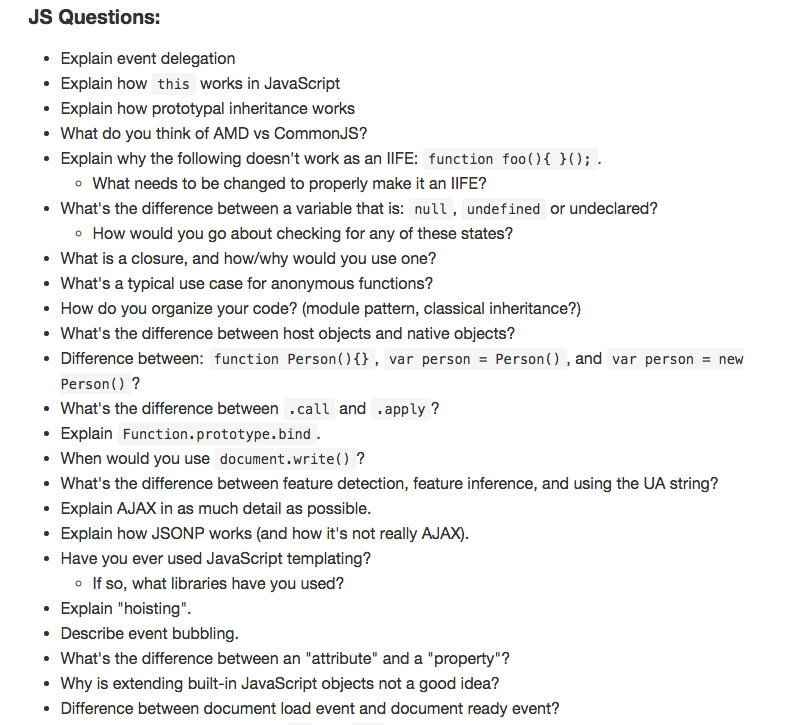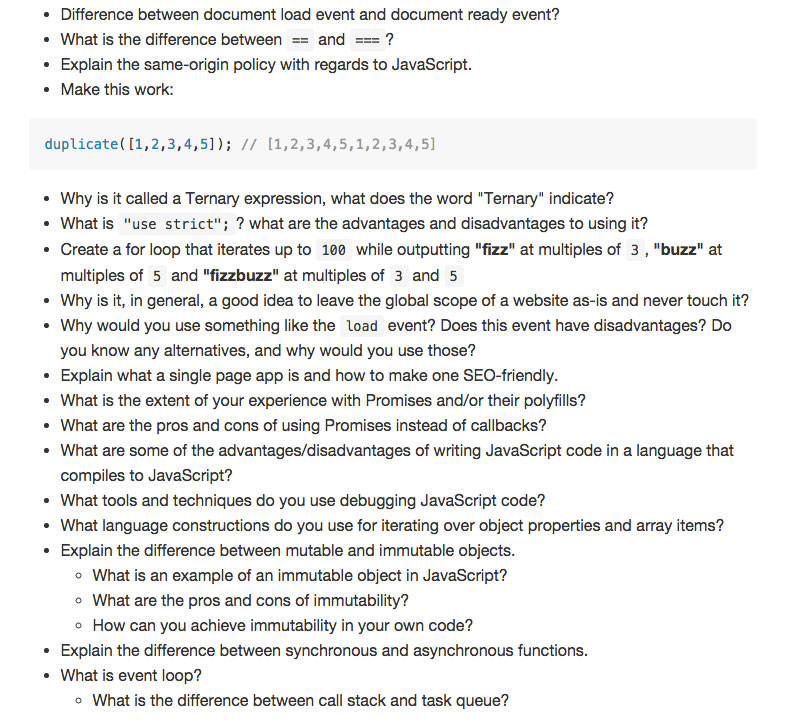Fizz Buzzkill...
Answering dreaded JS interview questions...
Created by Russ Anderson / @RealRealRuss

Me
- husband, father of 2 boys
- Nashville (Inglewood)
- Christian, member of Midtown Fellowship
- terrible golfer
- @RealRealRuss

Making transactions simple
Front-end Developer
- full time 5 years
- mostly self-taught / colleague-taught
- no computer science background
- mostly working within libraries and frameworks

Brad Frost
Front-end Job Interview Questions
https://github.com/h5bp/Front-end-Developer-Interview-Questions#js-questions
Why is it called a Ternary expression, what does the word "Ternary" indicate?
Ternary means it involves three things, and strings 'em all on one line so it's harder to read.
Create a for loop that iterates up to 100 while outputting "fizz" at multiples of 3, "buzz" at multiples of 5 and "fizzbuzz" at multiples of 3 and 5
That sounds hard, and for some strange reason I'm suddenly jonesing for a Dr. Pepper.
Several basic JS questions that I couldn't answer
I'm probably not alone
- I'll answer a few
- succinct explanation
- real world application
Are these questions relevant?
my favorite Fizz Buzz answer is walking out of the interview
— Reid Draper (@reiddraper) November 16, 2016
1) Explain event delegation
JS event listeners fire not only on a single DOM element but on all its descendants
2) Describe event bubbling.
Inverse of this. Also known as propogation, events on an element will "bubble up" and also fire on all parents
Example: live editing a form
Example: live editing a form
function handleChange(event) {
// track your change
console.log(event.currentTarget.value);
}
var formEls = document.getElementsByTagName('input');
for (var i = 0; i < formEls.length ; i++) {
formEls[i].addEventListener('change', handleChange, false);
}
Example: live editing a form
function handleChange(event) {
// track your change
// this time on e.target
console.log(event.target);
}
var el = document.getElementById('form');
el.addEventListener('change', handleChange);
Bonus tidbit
What's the difference between "target" and "currentTarget"?
The latter is the element with the listener attached, the former is the actual element that triggered it
3) Explain why the following doesn't work as an IIFE:
function foo(){
// i pity this code
}();
Immediately invoked function expression
Firefox - SyntaxError: expected expression, got ')'
4) Explain the difference on the usage of
function foo(){
// i am known as
// a definition or statement
}
var foo = function() {
// i am an expression
// i resolve to a value, even if just "undefined"
};
Functions as expressions vs. definitions
MDN - An expression is any valid unit of code that resolves to a value.
Functions as expressions vs. definitions
// this thing here
function foo(){
}();
// is as if you
function foo(){
}
();
// wrote it on separate lines
3a) What needs to be changed to properly make it an IIFE?
( function foo(){ } )();
behold the parentheses
Why would I ever use one?
Control variable scope
(function foo(){ })();
console.log(foo);
Firefox - ReferenceError: foo is not defined
5) Why is it, in general, a good idea to leave the global scope of a website as-is and never touch it?
You can't predict the future

- Reduce collision
- Maintain independence
- Easier to write your own code
6) Explain "hoisting".
all variables (var) are declared at the top of any given function scope whether you like it or not (includes function declarations)
Example - how I write it
1 function hoist(track) {
2 if (track === 'Down With Disease') {
3 var action = 'dance';
4 }
5 else {
6 var action = 'skip':
7 }
8
9 return action;
10 }
line 6 error: 'action' is already defined
Example - what JS does to it
1 function hoist(track) {
2 var action;
3 if (track === 'Down With Disease') {
4 action = 'dance';
5 }
6 else {
7 var action = 'skip':
8 }
9
10 return action;
11 }
var declaration "hoisted" to top. Linters don't like this but browsers don't mind.
So, yeah, technically, this works
1 function hoist(track) {
2 if (track === 'Down With Disease') {
3 action = 'dance';
4 }
5 else {
6 action = 'skip':
7 }
8
9 var action;
10
11 return action;
12 }
cue collective moan
In walks const and let
- Not hoisted
- Scoped within the block they are in
- Gives you more control
 Dr. Axel Rauschmayer: "Variables and scoping in ECMAScript 6"
Dr. Axel Rauschmayer: "Variables and scoping in ECMAScript 6"
What do we do with this knowledge?

var, const, or let?
7) What's the difference between a variable that is: null, undefined or undeclared?
Undeclared
const bar = foo + 1;
Firefox - ReferenceError: foo is not defined
you forgot something
undefined
let foo;
let bar = {};
let baz = ['jonny', 'phil', 'ed'];
const qux = function() {
// don't return anything
};
console.log(foo, bar.name, baz[4], qux());
// all print undefined
const quux;
// "Missing initializer in const declaration"
- variable declared but no defined value (not initialized)
- object/array exists but nothing at that key/index
- function exists but doesn't return anything
- falsy
null
const quux = null;
console.log(quux);
// prints null
- null has a value. Its value is null.
- null is a "nothing" value
- not zero, not an empty string/object/array
- falsy
7a) How would you go about checking for any of these states?
Undeclared finds you
Except when assigning a value.
// global scope
foo = 5;
console.log(foo);
// prints 5!
// implied global, aka a reason people hate JS
check for undefined
let foo;
console.log(typeof foo); // "undefined" as a string
console.log(typeof bar): // undeclared, but also returns "undefined" AARGH
// preferred
console.log(foo === undefined); // true boolean
const baz = 'undefined';
console.log(baz === undefined); // false. Hooray, I guess.
check for null
const foo = null;
console.log(typeof foo); // object let that sink in for a minute
// preferred
console.log(foo === null); // true boolean
8) What is the difference between == and === ?
check out this badness
let foo; // undefined
const bar = null; // null
// compare the two
console.log(foo == bar); // true boolean
Double equals checks for equality
Triple equals checks for equality and type
Wield accordingly.
9) What is the event loop?
9a) What is the difference between call stack and task queue?
story time
var markup = Handlebars.compile(template)(model);
this.$el.html(markup);
this.$el.foundation('reflow');
this would never work
story time
var markup = Handlebars.compile(template)(model);
this.$el.html(markup);
var self = this;
setTimeout(function() {
self.$el.foundation('reflow');
}, 0);
Defers invoking the function until the current call stack has cleared
(whatever that means)
explained
- Single-threaded
- Call Stack
- Task Queue
- Event Loop
why this works
var markup = Handlebars.compile(template)(model);
this.$el.html(markup);
var self = this;
setTimeout(function() {
self.$el.foundation('reflow');
}, 0);
setTimeout takes function from stack and puts in queue
You're hired!
Loads more


Just keep moving forward
http://russelljanderson.com/nashjsslides

